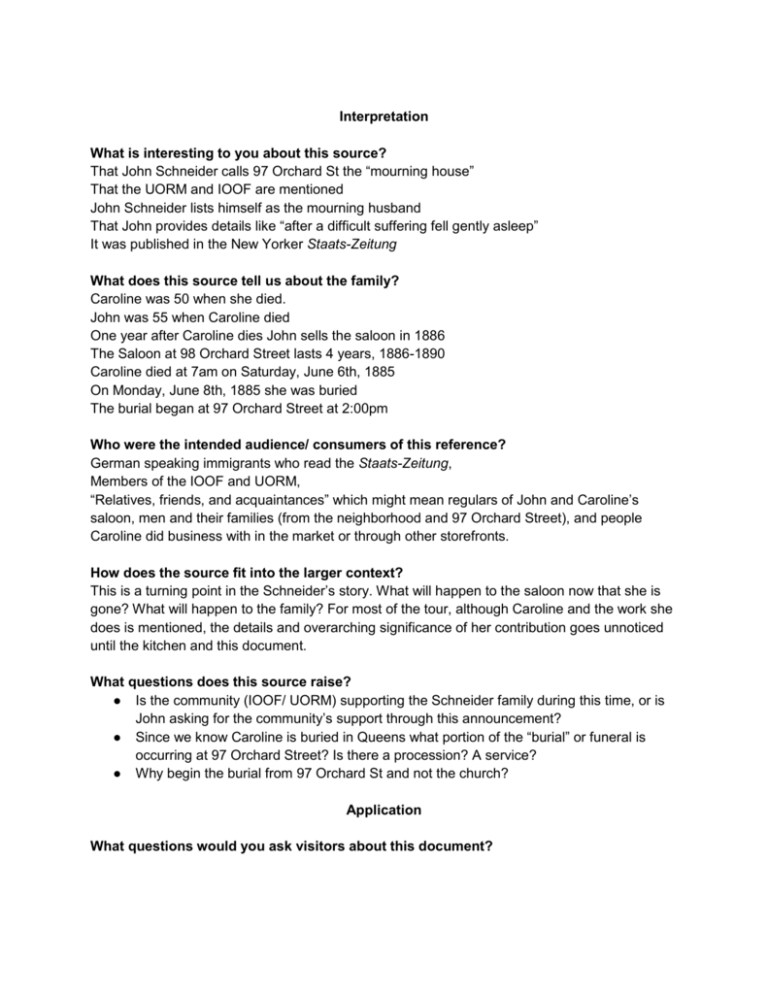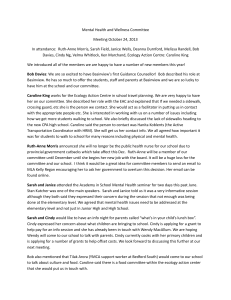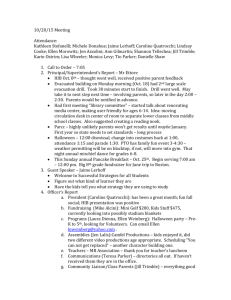John was 55 when Caroline died
advertisement

Interpretation What is interesting to you about this source? That John Schneider calls 97 Orchard St the “mourning house” That the UORM and IOOF are mentioned John Schneider lists himself as the mourning husband That John provides details like “after a difficult suffering fell gently asleep” It was published in the New Yorker Staats-Zeitung What does this source tell us about the family? Caroline was 50 when she died. John was 55 when Caroline died One year after Caroline dies John sells the saloon in 1886 The Saloon at 98 Orchard Street lasts 4 years, 1886-1890 Caroline died at 7am on Saturday, June 6th, 1885 On Monday, June 8th, 1885 she was buried The burial began at 97 Orchard Street at 2:00pm Who were the intended audience/ consumers of this reference? German speaking immigrants who read the Staats-Zeitung, Members of the IOOF and UORM, “Relatives, friends, and acquaintances” which might mean regulars of John and Caroline’s saloon, men and their families (from the neighborhood and 97 Orchard Street), and people Caroline did business with in the market or through other storefronts. How does the source fit into the larger context? This is a turning point in the Schneider’s story. What will happen to the saloon now that she is gone? What will happen to the family? For most of the tour, although Caroline and the work she does is mentioned, the details and overarching significance of her contribution goes unnoticed until the kitchen and this document. What questions does this source raise? ● Is the community (IOOF/ UORM) supporting the Schneider family during this time, or is John asking for the community’s support through this announcement? ● Since we know Caroline is buried in Queens what portion of the “burial” or funeral is occurring at 97 Orchard Street? Is there a procession? A service? ● Why begin the burial from 97 Orchard St and not the church? Application What questions would you ask visitors about this document? ● ● What was it like for the IOOF and UORM members to open up the Staats-Zeitung and expect to see the minutes from last week’s meeting, but instead they see this announcement? Caroline died on a Saturday and was buried on Monday, what was Sunday like in the saloon? How can this document draw multiple perspectives or humanize the content? I often used this document to set up John selling the saloon one year later, and moving to 98 Orchard Street to start another saloon. I often ask visitors to think about why he would do this. Their responses are often informed by Caroline’s death- too many memories, couldn’t run the business without her. Depending on the way this document is set up it can illustrate the significance of the work Caroline did for the saloon, her family, and the balancing act that was part of the lives of many 19th century immigrant women. This document can also highlight the individual differences within people. How much of the business was based off Caroline’s personality? Maybe John was an affable guy with good connections, but together with Caroline they were able to create a dynamic that drew people to their saloon. Unless we find a journal or a second hand account of Caroline’s disposition we will never know what others thought about her or what she thought about herself, but I think this document allows educators and visitors to interpret within this unknown space. How does the source fit into your tour theme? My theme varies a lot, but recently I’ve been trying to illustrate the relationship between the immigrant experience and the American Dream. How does the immigrant experience inform the American dream and vice versa? I think this document allows the educator to touch on the idea of the American Dream conveyed in the SL content: “to what extent is the American Dream the result of individual striving and talent; to what extent is it a family affair; to what extent does it rely on communal ties; and to what extent is it a combination of these factors?” How does Caroline’s obituary illustrate the interrelationship of these factories? How might you activate this primary source: Within the space? Emphasize that this is a turning point for the family and read the obituary out loud for visitors. For Adults? I might ask someone to read Caroline’s obituary and prompt them to think about it from the perspective of their character. For Kids? Ask kids to think about the saloon the next day from the perspective of Henry or Jackson Schaefer. Maybe you are used to or even looking forward to the music, food, and commotion of the saloon on Sunday, but on Sunday June 7th the atmosphere will be different- it will be somber, but maybe people from the community will be here helping out John, making food, preparing for Monday. As a young child you will see the community utilizing the space of the saloon and home of the Schneiders in a different way. For visitors from faraway lands? I’m not sure how I would activate this document specifically for people who are visiting from another country. I might not connect it to the American dream, but use to interpret different definitions of success.





